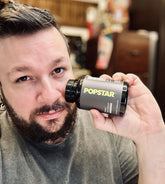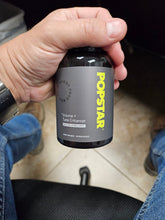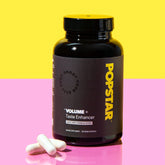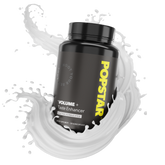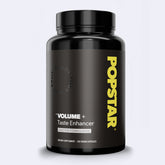Spunk, commonly used as a slang term for semen, refers to the thick, whitish fluid released from the penis during ejaculation. Although the word is informal, the topic itself is tied to men’s reproductive health, fertility, hormone balance, and sexual wellbeing. Understanding what spunk is, how it’s produced, and what influences its quality can help men make informed decisions about their overall sexual and reproductive health.
Table of Contents
- What Is Spunk? Definition and Overview
- Quick Facts About Spunk
- Spunk Composition and Biological Function
- How Spunk Is Produced
- Why Spunk Matters for Men’s Health
- Factors That Influence Spunk Quality
- Potential Concerns Related to Spunk
- Signs of Healthy vs. Unhealthy Spunk
- How to Support Healthy Spunk Production
- Spunk and Sexual Function
- Spunk and Fertility
- Myths and Facts About Spunk
- When to Seek Medical Help
- Frequently Asked Questions About Spunk
- References and Further Reading
- Disclaimer
What Is Spunk? Definition and Overview
Spunk is a slang term for semen, the bodily fluid that carries sperm. In men’s health discussions, spunk refers not only to ejaculation but also to male reproductive function, fertility potential, and indicators of overall wellness.
Key Takeaways
- Spunk is another word for semen.
- It plays a key role in fertility because it carries sperm.
- Spunk quality may reflect hormonal, testicular, or prostate health.
- Color, consistency, or volume changes can signal health issues.
- Diet, hydration, lifestyle, and age influence spunk production.
- Healthy spunk supports sperm movement and fertilization.
- Problems with spunk volume or sperm count can impact fertility.
- Most variations in appearance are harmless unless persistent.
Quick Facts About Spunk
| Category | Details |
|---|---|
| Spunk Meaning | Slang term for semen |
| Primary Function | Transport sperm for reproduction |
| Produced By | Testicles, prostate gland, seminal vesicles |
| Typical Volume | Around a teaspoon (varies widely) |
| Influenced By | Hydration, age, hormones, health, lifestyle |
| Related Health Areas | Fertility, prostate health, hormones |
Spunk Composition and Biological Function
Semen is a complex fluid made of sperm cells and seminal fluid. Each component plays a role in fertility and reproductive health.
Spunk Components
- Sperm cells
- Seminal vesicle fluid
- Prostate gland secretions
- Enzymes and proteins
- Fructose for energy
- Minerals such as zinc
What Spunk Does
- Protects sperm
- Provides energy for sperm movement
- Helps sperm travel through the reproductive tract
How Spunk Is Produced
Spunk production involves multiple organs and hormones working together.
Key Organs
- Testicles: produce sperm
- Epididymis: stores sperm
- Prostate gland: produces protective secretions
- Seminal vesicles: supply most of the fluid in semen
Hormones Involved
- Testosterone
- FSH (follicle-stimulating hormone)
- LH (luteinizing hormone)
Why Spunk Matters for Men’s Health
Spunk can reflect multiple aspects of male health.
Health Areas Linked to Spunk
- Fertility
- Prostate health
- Hormone balance
- General wellness
- Sexual function
Changes in spunk may sometimes signal medical issues.
Factors That Influence Spunk Quality
Many lifestyle and health factors affect semen quality.
Common Influences
- Diet and nutrition
- Hydration
- Sleep quality
- Stress levels
- Alcohol and smoking
- Hormonal changes
- Illness or infection
Potential Concerns Related to Spunk
Changes in semen are usually harmless but may sometimes reflect underlying issues.
Possible Issues
- Low volume
- Watery or thick semen
- Blood in semen
- Unusual odor
- Pain during ejaculation
Signs of Healthy vs. Unhealthy Spunk
Healthy Spunk
- Whitish or slightly gray color
- Gel-like consistency that liquefies
- No strong or foul odor
Potential Warning Signs
- Yellow, green, or brown discoloration
- Persistent watery or lumpy texture
- Painful ejaculation
How to Support Healthy Spunk Production
Helpful Steps
- Stay hydrated
- Maintain balanced nutrition
- Manage stress
- Exercise regularly
- Limit alcohol
- Avoid smoking
Spunk and Sexual Function
Semen quality is not the same as erectile function, but both are influenced by circulation, hormones, and overall health.
Related Factors
- Testosterone levels
- Pelvic health
- Frequency of ejaculation
- Age
Spunk and Fertility
Healthy spunk supports sperm survival and movement.
Fertility Indicators
- Sperm count
- Sperm motility
- Sperm shape (morphology)
- Semen volume
Myths and Facts About Spunk
| Myth | Fact |
|---|---|
| More semen means more fertility | Volume does not guarantee sperm count |
| Color changes always mean illness | Many changes are harmless |
| Frequent ejaculation lowers fertility | It often supports healthy sperm turnover |
When to Seek Medical Help
You may need medical evaluation if you notice:
- Persistent pain with ejaculation
- Blood in the semen
- Long-term fertility issues
- Ongoing unusual changes in semen
Frequently Asked Questions About Spunk
What does spunk mean in men’s health?
Spunk is another word for semen. In men’s health, it relates to reproduction, fertility, and sexual function.
What is spunk made of?
Spunk includes sperm cells, fluid from the prostate, and secretions from the seminal vesicles.
Is it normal for spunk to vary in color?
Yes, minor variations are common. Persistent changes should be checked by a doctor.
Can spunk quality affect fertility?
Yes. Sperm count, motility, and volume influence fertility potential.
Does hydration affect spunk production?
Hydration can slightly influence semen volume.
Can lifestyle affect spunk quality?
Smoking, alcohol, and diet can affect sperm health.
Does age change spunk?
Yes, semen volume and sperm count may decrease with age.
Can stress impact spunk quality?
High stress may affect hormone levels and sperm production.
What foods support healthy semen?
Foods rich in zinc, antioxidants, and vitamins often support reproductive health.
Is thick or watery spunk normal?
Yes, temporary changes are normal. Consistent changes may require evaluation.
Does ejaculation frequency change spunk?
Frequent ejaculation may lower volume temporarily but often improves sperm quality.
Can medications affect spunk?
Some medications influence hormones or sperm production.
What causes low spunk volume?
Dehydration, low hormones, or blocked ducts may contribute.
Can exercise improve semen quality?
Moderate activity can support hormone balance.
When should I talk to a doctor?
If you notice persistent changes, pain, or difficulty conceiving.
References and Further Reading
- National health service reproductive health overviews
- Major urology association resources on semen analysis
- Reputable sexual health nonprofit educational materials
- Peer-reviewed studies on male fertility and semen quality
Disclaimer
This article is for informational purposes only and does not replace medical or mental health advice. Always consult a qualified healthcare professional for personal concerns.


















